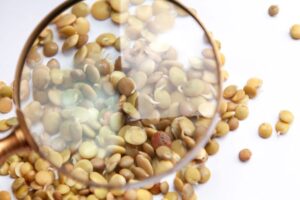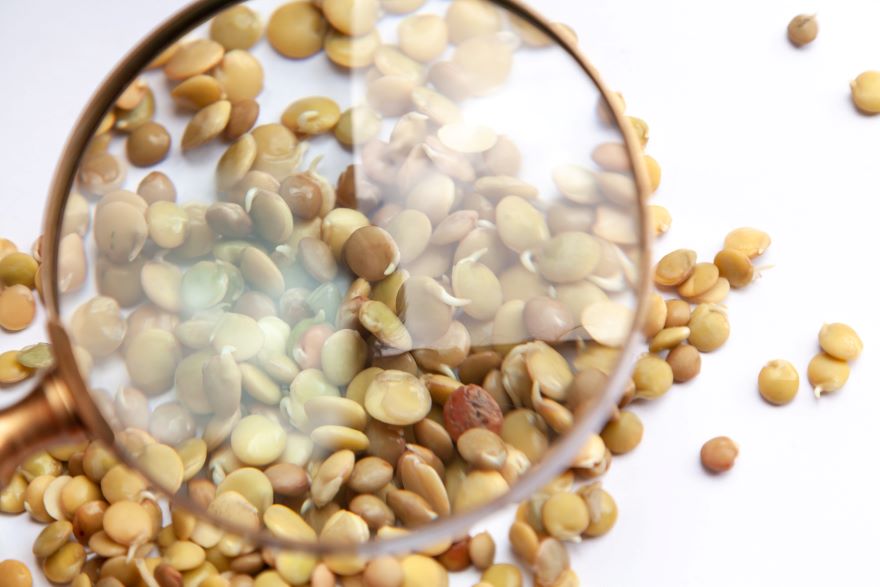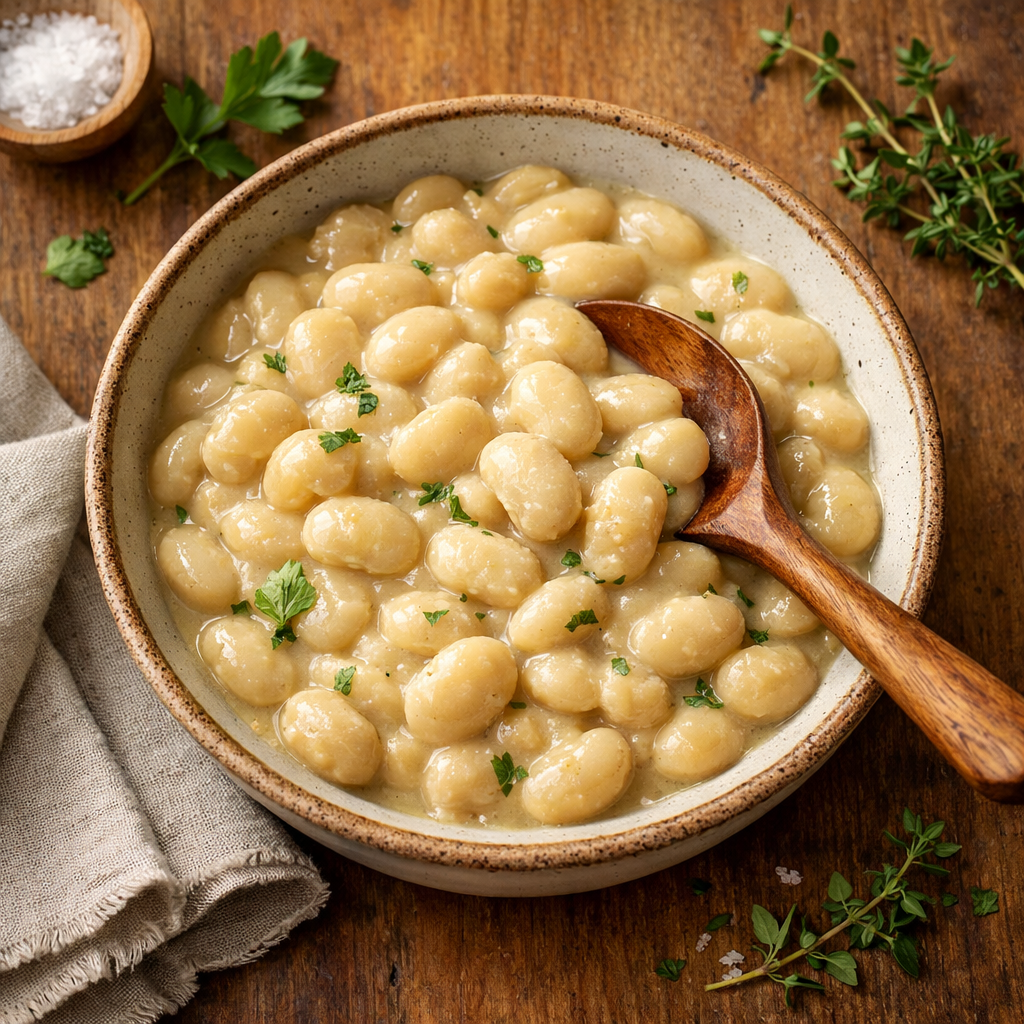Lentil seeds are an essential part of many cuisines worldwide, valued for their versatility and nutritional benefits. You can grow lentils in various climates as they are a cool-season legume and relatively easy to cultivate. Choose lentil seeds carefully as each variety has distinct flavors and growth patterns.
Lentil plants require fertile, well-draining soil and plenty of sunlight for a successful harvest. Paying attention to their watering and nutritional needs, along with suitable companion planting, can significantly improve overall crop quality. In addition to their culinary uses, lentils bring several health benefits, including being a good source of protein, fiber, and essential nutrients such as iron and folate.
Key Takeaways
Lentils are versatile and nutritious legumes, with various types suitable for different cuisines and growing conditions.
Optimal lentil growth relies on well-draining soil, sufficient sunlight, and appropriate companion plants.
The nutritional content and diverse culinary uses of lentils contribute to their popularity and worldwide cultivation.
Understanding Lentils
Lentils are pulses in the Fabaceae family, along with beans and peas, and scientifically known as Lens culinaris. People worldwide use lentils as a versatile ingredient, and they classify them as both a fruit and a vegetable. Dried lentils are protein-rich, fiber-rich, and nutrient-dense, making them a favorite ingredient in vegan and vegetarian recipes.
There are several types of dried lentils, each with their own unique characteristics. Brown lentils, also known as adas, mercimek, or messer, are the most common variety and have a mild, earthy flavor. Green lentils, like the green Eston and Avondale varieties, have a slightly firmer texture and a more robust taste. Heramame, masoor, and brewer lentils are small, red-orange legumes that become soft and creamy when cooked. Some other well-known types of lentils include Puy, Red Chief, and Beluga.
When it comes to cooking with lentils, it’s important to note that different varieties may require different preparation methods and cooking times. For instance, you can cook brown lentils and green eston lentils directly from their dried state without any additional soaking.. On the other hand, red chief lentils and puy lentils may benefit from a brief soak before cooking to help even out any potential differences in size and ensure an even cooking result. As with any pulse or legume, it is essential to thoroughly rinse lentils before using them in dishes to remove any dirt or debris.
In conclusion, understanding the various types of lentils and their unique characteristics allows for a more versatile and flavorful cooking experience. Through experimentation with various lentil varieties, it is possible to create numerous delicious and nutritious recipes that cater to a wide range of dietary preferences.
Seed Selection and Planting
Before planting lentils, I always make sure to select high-quality lentil seeds. Choosing a lentil seed variety that suits the specific region and climate is crucial. Typically, you can plant lentil seeds in the spring, a few weeks before the last frost date.
When it comes to soil, I’ve found that lentils thrive best in sandy or loamy soil types with a pH ranging from slightly acidic to neutral (6.0 to 7.5). This ensures that the soil is well-drained and has good drainage is crucial when growing lentils, as they do not grow well in waterlogged conditions. If I’m unsure about my soil’s pH, I use a soil testing kit to determine its acidity before planting.
Once I have the right soil, I make sure that the planting area receives full sun. Lentils need at least 6 to 8 hours of sunlight per day to develop healthy plants. If I’m limited in outdoor space or live in an area with unpredictable weather, I’ve found that I can also grow lentils indoors in containers, as long as they still receive adequate sunlight.
To plant my lentil seeds, I dig small holes 1 to 2 inches deep, spaced 1 inch apart and 18 to 24 inches between rows. If I’m growing lentils on a trellis, I’ll space them closer together – about 5 inches apart – so that the air can circulate between plants. This helps prevent diseases and encourages healthy growth.
After planting the seeds, I water them and keep the soil moist until the seedlings begin to emerge, usually within a week. From that point on, I continue to care for my lentil plants by providing them with sufficient sunlight, water, and nutrients to ensure a successful harvest.
Growing Conditions
Growing lentils is a rewarding process, and choosing the correct growing conditions is crucial for a successful harvest. I always begin by selecting a suitable location, which includes making sure the area receives full sunlight. This ensures my lentil plants get at least 6-8 hours of direct light each day. Besides, I avoid places that quickly get waterlogged since lentil plants don’t handle standing water well.
Proper air circulation and temperature play a crucial role in my lentil garden’s success. With a preferred soil pH of 6.0 to 8.03, my lentil plants enjoy a relatively neutral environment. Early in their growth, I’ve noticed that young lentil plants can tolerate light frost and may even regrow from below the soil surface if the frost damage is substantial4. Therefore, I usually sow the seeds in late April to early May, which is about three weeks before the last frost date5.
When it comes to watering and humidity, I make sure to keep my lentil plants evenly moist throughout their growth. They are more drought-tolerant than other beans, so I avoid overwatering them, especially once the pods start to dry. Lentils generally require 80 to 110 days to reach harvest, and during this time, I make sure they receive the necessary care.
Lentils are well-adapted to Mediterranean climates, climate-wise. Grown in such regions, they provide an abundant and healthy harvest. I also noticed that they grow well when planted near cucumbers and summer savory, which can create beneficial companionship.
By providing my lentil plants with the right growing conditions, including ample sunlight, proper air circulation, suitable temperature, and adequate watering, I ensure a bountiful harvest that’s both nutritious and delicious.
Soil and Fertilization
When I grow lentils, I prefer a soil that has a good balance of organic matter, as it promotes better growth and makes the roots healthier. Also, I’ve found that lentil plants thrive in sandy or loamy soil with a more acidic pH, around 6.0. This type of soil ensures that my plants have better access to essential nutrients, while also providing good drainage capabilities. Using compost can be beneficial for enriching the soil and improving its overall quality.
Considering that lentils belong to the legume family, they have the ability to fix nitrogen in the soil with the help of specific bacteria called Rhizobium leguminosarum. I often use an inoculant containing these helpful bacteria to enhance nitrogen production. This way, my lentil plants have access to sufficient nitrogen without the need for chemical fertilizers. Nonetheless, it’s crucial to note that low rates of fertilizer can be beneficial, especially in soil with low nutrient levels.
Sulfur also plays a vital role in lentil plant growth, contributing to both yield and protein content. When I notice a deficiency of sulfur in my soil, I make sure to supplement it with a sulfur-containing fertilizer. This ensures that my lentil plants get adequate nutrients for healthy growth and development.
Overall, my approach to soil and fertilization focuses on promoting a nutrient-rich, well-balanced environment for lentil plants. By paying close attention to soil conditions and the needs of my plants, I’m able to create a thriving and productive lentil garden.
Pest and Disease Management
As a lentil grower, I need to be aware of various pests and diseases that can affect the crop. One of the main insect pests I have to deal with are aphids. Aphids, such as Aphis craccivora and Acyrthosiphon pisum, can cause significant damage to the plants by sucking the sap from the leaves and stems leading to growth reduction.
To manage these pests, I often use neem oil as a natural and effective solution for pest control. Neem oil works by disrupting the hormonal system of insects, preventing their growth and reproduction.
It’s important for me to be vigilant about fungal diseases that can attack lentil crops like root rot and blight. Soil-borne fungi like Fusarium species can cause root rot by attacking plant roots, blocking nutrient uptake, and leading to plant death. On the other hand, blight is a foliage disease that causes spots and kill the plant tissue. White mold is another devastating fungal disease, which can cause wilting and death of lentil plants.
Bacterial diseases can also affect lentil crops, and one of the major concerns for my crop is bacterial blight. This disease is characterized by water-soaked spots on the leaves that grow bigger over time, eventually leading to leaf fall. To control bacterial infections, crop rotation proves to be effective, as it interrupts the life cycle of the bacteria and reduces the risk of infection in future crops.
Overall, managing pests and diseases in lentil crops requires me to be proactive, using various strategies to prevent and control issues that may arise. By incorporating methods like crop rotation, regular monitoring, and using natural pest control solutions like neem oil, I can ensure my crop remains healthy and productive.
Harvest and Storage
I have learned that harvesting lentils is a crucial part of the lentil growing process. It is essential to harvest them at the right time to ensure the best quality and flavor. When the lentil plants start to turn yellow and the pods become firm, it is the ideal time for harvesting. You can gently pull the plants out of the ground or use a combine to harvest the lentils.
Once the lentils are harvested, it is important to properly store them to maintain their quality. I understand that lentils should be stored with a moisture content of less than 14% to prevent spoilage. To achieve this, spreading the lentils out evenly and allowing them to air dry is an effective technique. It is essential to check the moisture levels periodically, and if necessary, use drying equipment to meet the required moisture content.
In addition to moisture control, the storage environment should be cool and dry to prevent mold and insect infestations. Proper lentil storage management also involves regular inspections and cleaning of the storage area to maintain ideal conditions.
Grading is another crucial aspect of the lentil harvest process. Lentil grades are established by the Canadian Grain Commission, setting guidelines for buyers, processors, and exporters when determining prices. Lentils are classified into two classes: Red Lentils and Lentils other than Red. Each class has specific grading criteria based on factors like size, shape, color, and overall quality.
Growing and harvesting lentils can be a rewarding experience. By following the right harvesting techniques and proper storage methods, you can enjoy high-quality, nutritious lentils that can be a versatile addition to your diet.
Cooking with Lentils
As a legume lover, I have found lentils to be versatile seeds that can be incorporated into various dishes. Not only do they offer numerous health benefits, but they are also incredibly easy to cook. When cooking with lentils, I always make sure to rinse them thoroughly to remove any debris or shriveled seeds. I like to cook them in a 3:1 ratio of water to lentils, which typically takes about 20-25 minutes for green and brown varieties. You can find more detailed cooking instructions here.
Sprouting lentils is another method I enjoy, as it enhances their nutritional value and can be used in fresh dishes like salads. To sprout lentils, simply soak them overnight, rinse them well, and let them sit in a container with a damp paper towel. In a few days, they will begin to sprout, and you can enjoy them in your favorite salad recipes.
Lentils are an excellent ingredient for preparing soups as well. Their ability to absorb flavors and their creamy texture make them a perfect fit for various soup recipes. I often cook lentil soups with vegetables, spices, or even meats to add more depth and flavor. Paired with a crusty bread or rice, these soups make a hearty and satisfying meal.
In conclusion, lentils are an invaluable ingredient in my kitchen. From sprouting and salads to soups, I find endless possibilities to incorporate them into my daily meals. Their ease of cooking and versatility have made them a staple in my culinary adventures.
Frequently Asked Questions
- How do you grow green lentil seeds? First, prepare the soil by adding aged compost to the planting bed. Then sow the seeds about 1 inch deep, with 5 inches between each seed, in rows at least 12 inches apart. Water regularly until the seedlings begin to appear within about a week. It’s important to provide good air circulation around the plants, and side dress the plants with compost tea when they reach 5 inches tall and again at flowering.
- What is the average size of a lentil seed? The average size of a lentil seed is about 3-6 mm in diameter, depending on the variety. They also come in different colors, such as green, brown, black, yellow, and red.
- What are some traditional lentil seed varieties? There are several lentil seed varieties, including French green lentils, brown lentils, and red lentils. Each of these varieties has its own flavor and cooking time. French green lentils are known for their peppery flavor and firm texture, brown lentils have a mild, earthy flavor, and red lentils have a sweeter flavor and become soft when cooked.
- Which lentil seeds are considered rare? Some rare varieties of lentil seeds include the Black Beluga lentil, which is named for its resemblance to beluga caviar, and the Petite Crimson lentil, which is a small red variety with a unique, nutty flavor. These lentils may be harder to find compared to more commonly grown varieties.
- Are pardina lentils and chickpea seeds related? While both pardina lentils and chickpea seeds are legumes, they belong to different plant species. Pardina lentils are a variety of brown lentil (Lens culinaris) with a nutty flavor and firm texture. Chickpea seeds are also known as garbanzo beans. They belong to the same legume plant family, but they are not the same species.

*We may earn a commission for purchases made using our links. Please see our disclosure to learn more.



